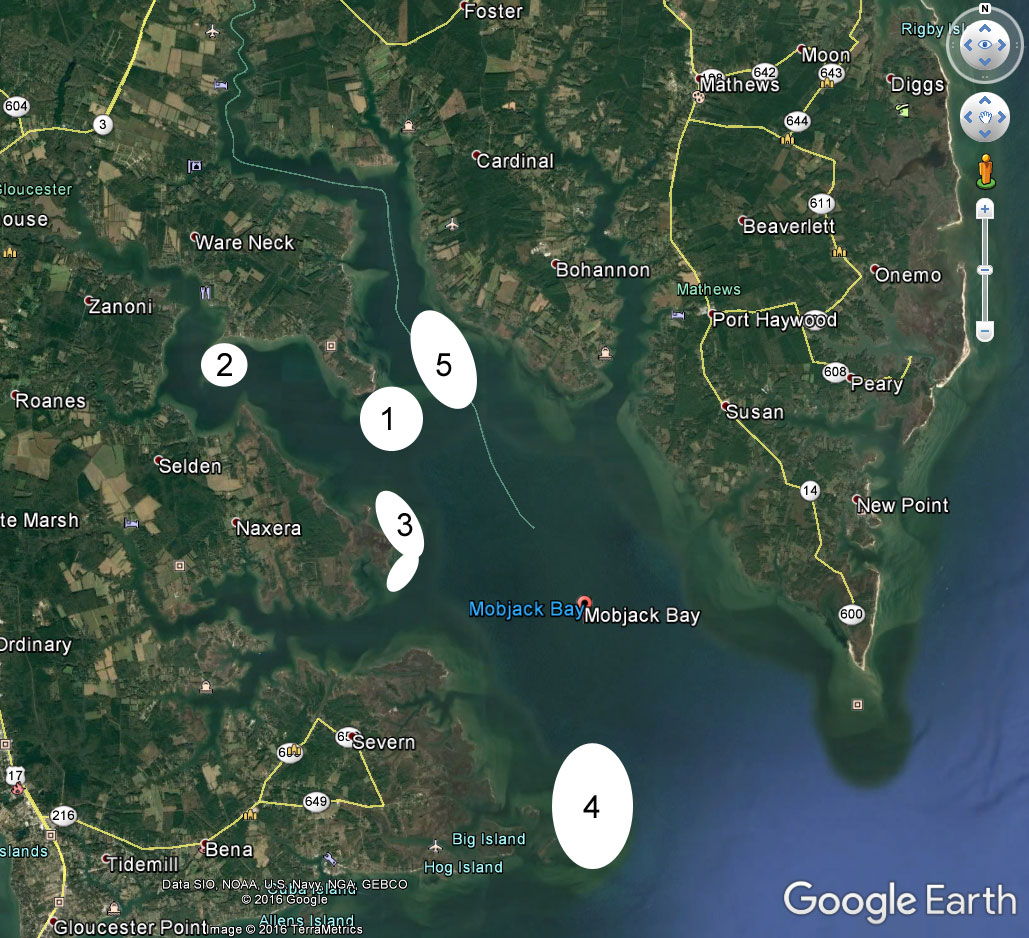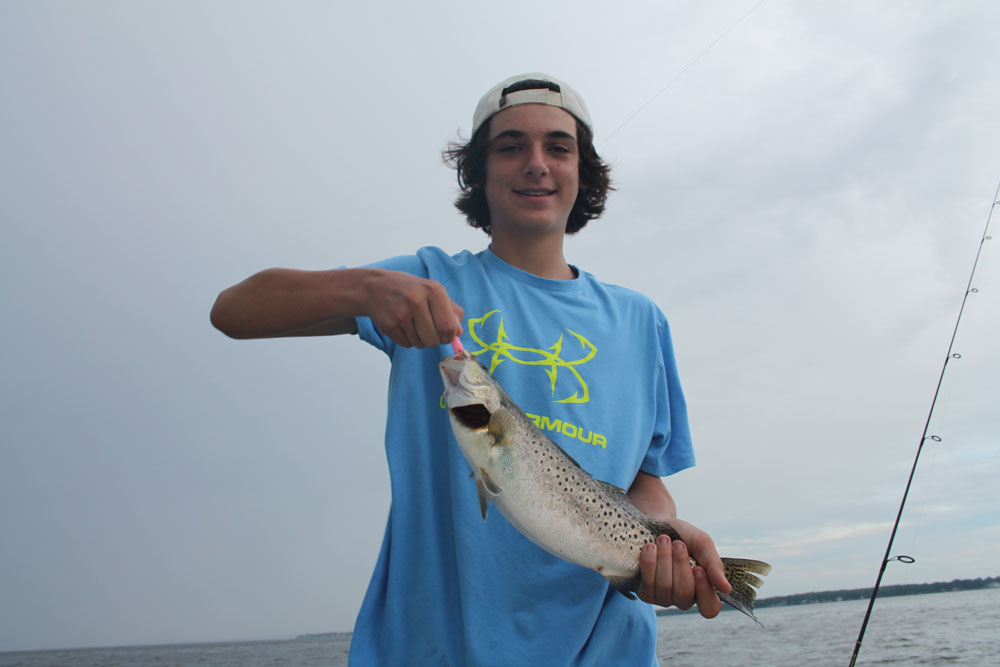Year in and year out as fishing hotspots come and go, Mobjack Bay usually holds its own for light-tackle casting to stripers, speckled sea trout, and redfish. This is in no small part thanks to relatively healthy SAV (submerged aquatic vegetation) which, for some reason, consistently does better here than in other near-by bodies of water. According to VIMS (Virginia Institute of Marine Science) researchers, widgeon grass here is mixed with eelgrass, and while widgeon grass in the nearby Rappahannock River (where there is no eelgrass) comes and goes from year to year—in Mobjack it’s much more reliable.

As any serious angler knows, weedbeds are a prime hiding and hunting spot for predatory fish. So Mobjack remains a prime destination for predatory humans, too. While pointing out that the specific locations of weedbeds do shift quite a bit from year to year, here are five important spots you’ll want to check out, the next time you head for Mobjack Bay.
- The water off Ware Neck Point. This is a reliably weedy spot that should be checked out each and every time you fish Mobjack. Due to its position between the Ware and North rivers, there are also some interesting current patterns here.
- There are VMRC (Virginia Marine Resources Commission) oyster reef here, located on the edges of Jarvis Point. These may hold fish at any time, but when weedbeds grow in the shallower water up on the point, you have a recipe for seriously good fishing.
- While it does vary from season to season, the waters east and south of Four Point Marsh historically are an excellent bed for finding thick weedbeds.
- The flats at the southern end of Mobjack are quite exposed, and the weedbeds here are subject to being torn up by rough waters. While that’s bad, it’s not all bad—the hap-hazard edges and potholes formed in the beds are great places to catch fish.
- Relatively deep water just inside the mouth of the North River is a great place to soak baits for croaker and spot, during the middle of the day. Note that at night, the croaker will often shift to shallower water.
TIP: While casting and retrieving jigs is certainly effective in the weeds, locals have their own favored technique of fishing here. They troll, often with floating plugs like Mir-O-Lures, Rapalas, or Yo-Zuris, in as erratic a way as possible. Just how erratic? Old timers will actually row the boat, to get a jerky, on-again off-again action out of the lures. Chartreuse and pink are the favored colors.

Sign up here to get the weekly FishTalk Chesapeake Bay and Mid-Atlantic fishing reports in your email inbox, every Friday by noon.